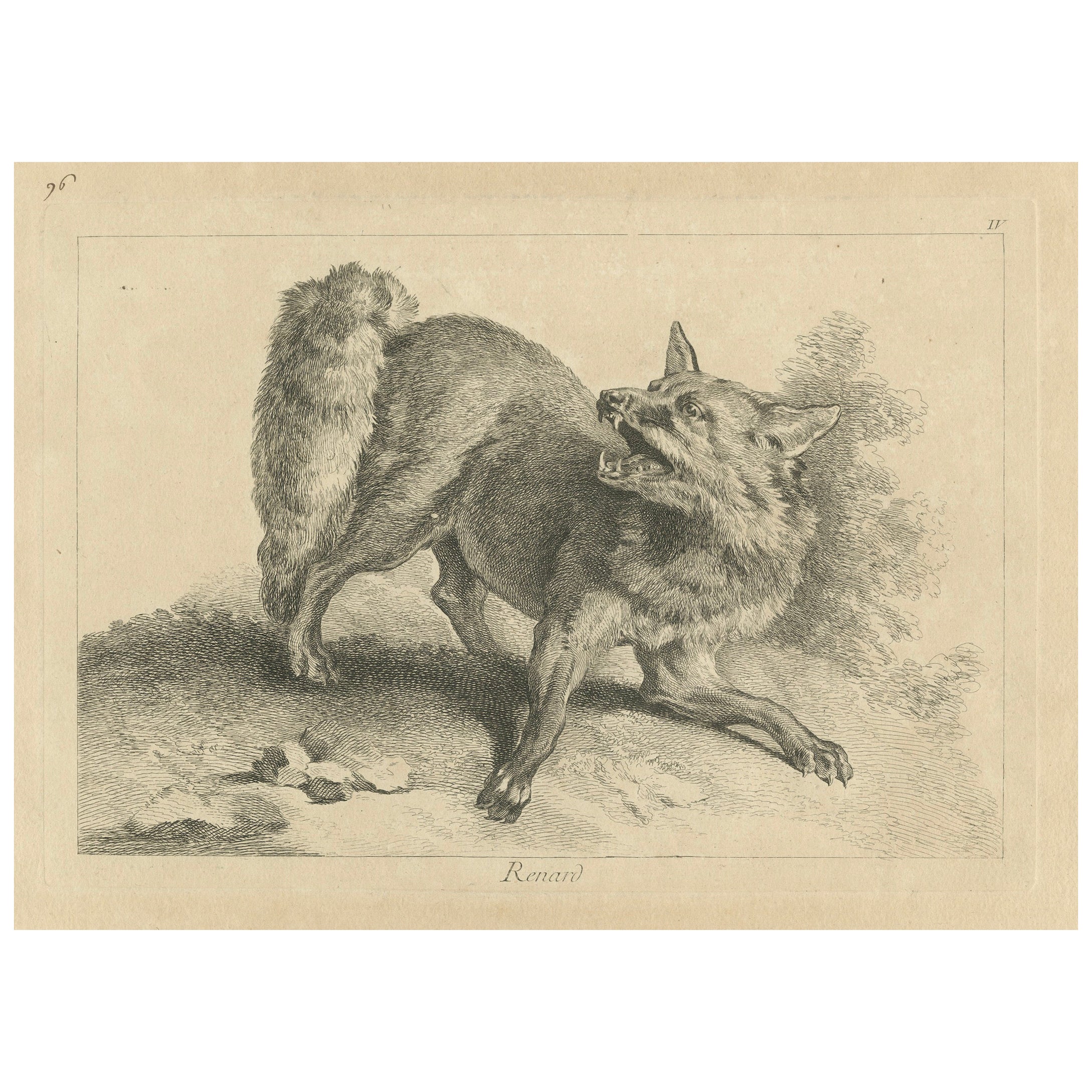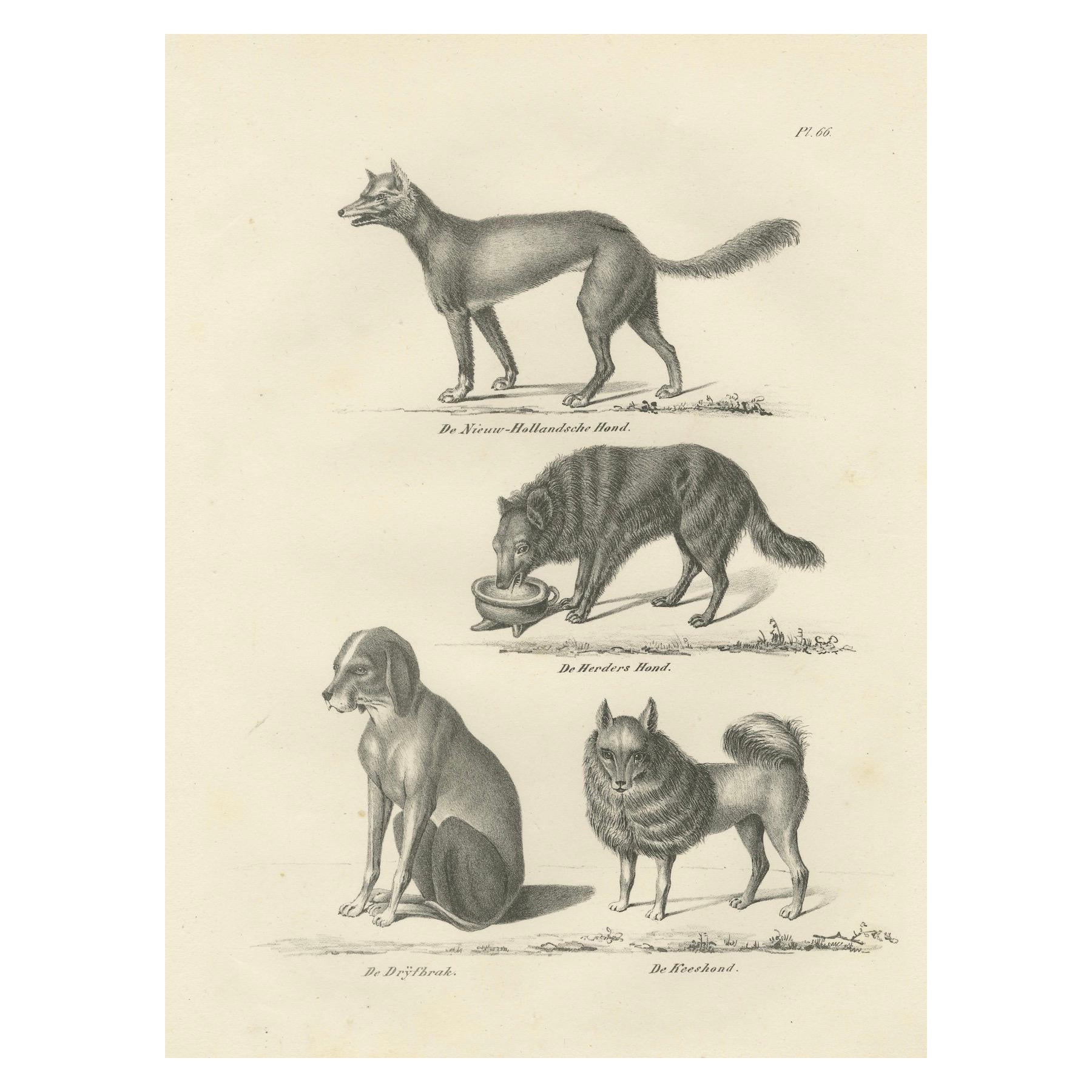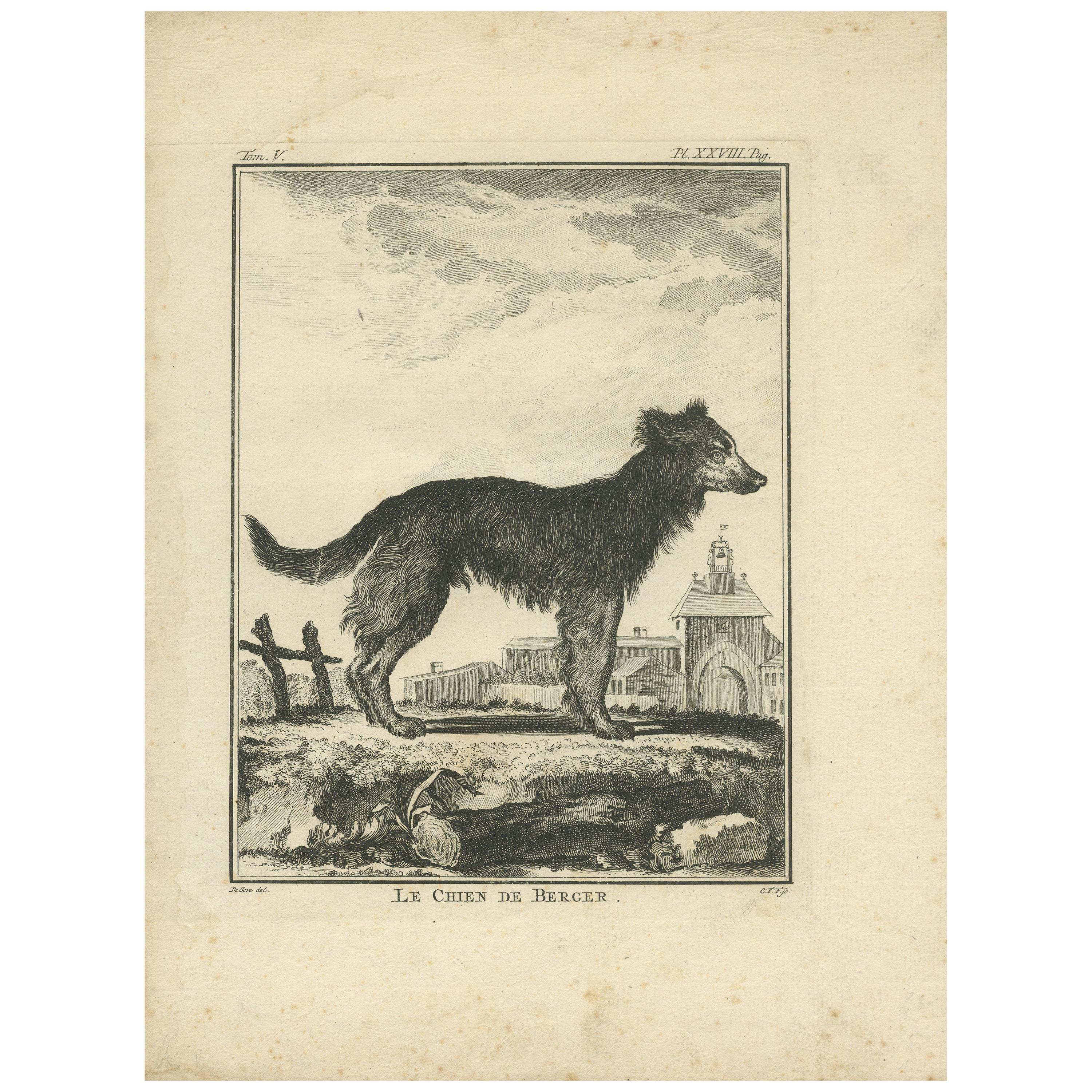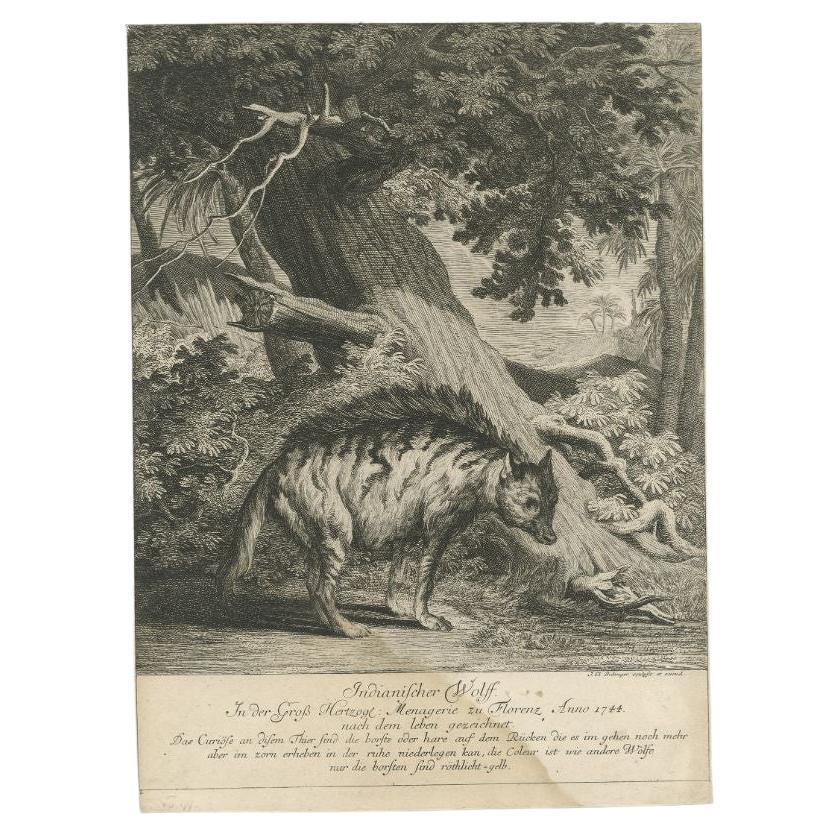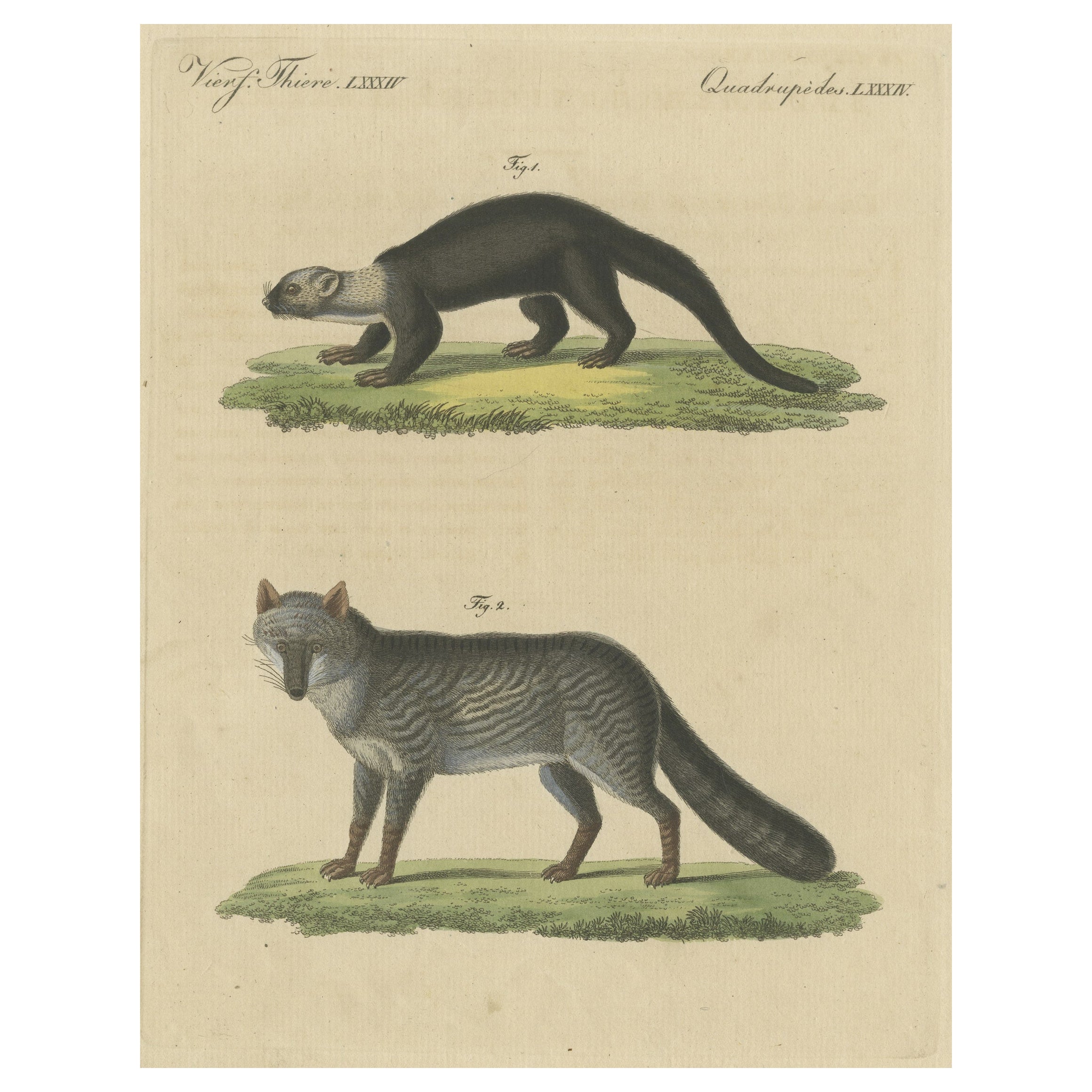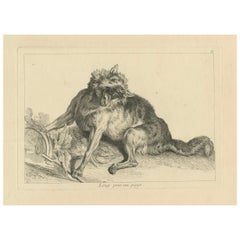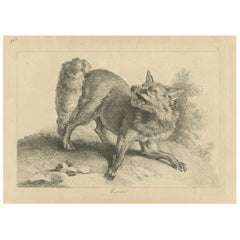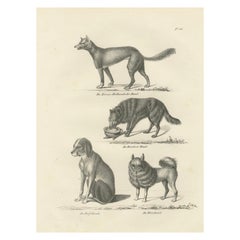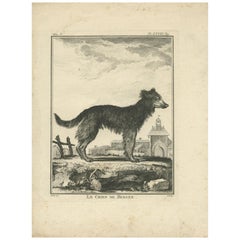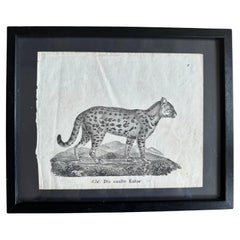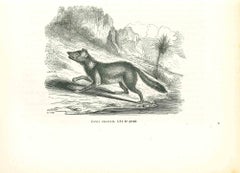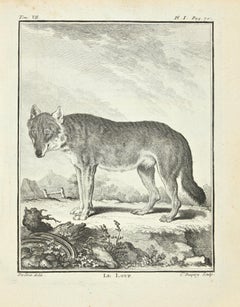Items Similar to Old German Engraving of the Canis Cruciger: The Cross-Bearing Canine, 1774
Want more images or videos?
Request additional images or videos from the seller
1 of 6
Old German Engraving of the Canis Cruciger: The Cross-Bearing Canine, 1774
$179.58
$224.4820% Off
£134.61
£168.2620% Off
€152
€19020% Off
CA$246.71
CA$308.3920% Off
A$275.43
A$344.2920% Off
CHF 144.32
CHF 180.4020% Off
MX$3,371.56
MX$4,214.4520% Off
NOK 1,832.90
NOK 2,291.1220% Off
SEK 1,728.19
SEK 2,160.2420% Off
DKK 1,157.08
DKK 1,446.3520% Off
Shipping
Retrieving quote...The 1stDibs Promise:
Authenticity Guarantee,
Money-Back Guarantee,
24-Hour Cancellation
About the Item
Title: "Canis Cruciger: The Cross-Bearing Canine"
The text on the print refers to the creators of the image:
- "D. Hermann Fil. pinx Argent" likely indicates "D. Hermann Fil. (Filius), pinxit (painted) at Argent(um)," suggesting that D. Hermann the Younger was the painter of the original work, and it was created in Strasbourg (Argentum being the Latin name for Strasbourg).
- "Nusbiegel fc" refers to Nusbiegel who engraved the work (with "fc" standing for "fecit," which means "made by" in Latin).
So, the complete credit for the illustration would read: Painted by D. Hermann the Younger in Strasbourg and engraved by Nusbiegel., depicting the 'Canis cruciger', a term that could historically refer to a species or variant of wild dog bearing distinctive markings.
The print is likely from "Die Säugthiere in Abbildungen nach der Natur mit Beschreibungen" (The Mammals in Illustrations According to Nature with Descriptions), which was a comprehensive work on mammals by Johann Christian Daniel von Schreber starting publication in 1774. Schreber's work included detailed illustrations of a wide variety of mammals, and it is possible that this image of "Canis cruciger" was a part of that collection or a similar work from the same period.
However, without the specific context or a reference to the volume and page number from Schreber's collection, I cannot confirm with absolute certainty that this print is from that work. To verify, one would typically look for a specific catalog or reference number associated with Schreber's volumes that matches this print.
The illustration is a part of an extensive natural history collection, characterized by its rich detail and precise naturalistic style. The canine is portrayed in profile with a keen, alert expression and a dynamic posture, suggesting motion. Notable are the rich, russet and grey tones of its fur and the dark, bushy tail, hinting at the artist's keen observation and skillful representation of the animal's physical attributes.
The backdrop features a sparse landscape with modest vegetation and rocks, providing a context that emphasizes the subject. This image is a testament to the scientific and artistic endeavors of the period, bridging the gap between art and the burgeoning field of zoology.
More about the animal:
The term "Canis cruciger" does not correspond to any known species in modern taxonomy. It can be translated from Latin as "cross-bearing dog," which may suggest a canine with a cross-like marking on its back. Given the historical context of the illustration, this term could have been used to describe a dog with such distinctive markings, possibly a variant or a now-extinct breed.
In the 18th and 19th centuries, when such illustrations were common, many animals were classified and named based on physical characteristics observed by naturalists, and the understanding of species and classification was not as advanced as it is today. The detailed artwork of the time often depicted animals in a manner that combined scientific interest with artistic expression, attempting to capture the essence of the species as understood at the time.
Without a specific scientific name or modern reference, it's difficult to provide detailed information about "Canis cruciger." If this term comes from an older classification system, it might not directly correlate with any single species we recognize today. Instead, it might refer more generally to a type of dog known at the time for its distinctive fur pattern.
- Dimensions:Height: 10.44 in (26.5 cm)Width: 7.88 in (20 cm)Depth: 0 in (0.02 mm)
- Materials and Techniques:Paper,Engraved
- Period:1770-1779
- Date of Manufacture:1774
- Condition:Good. Overall minor soiling due to handling and age, except one corner showing a black residu, possibly inkt. The hand-colored image itself is in beautiful colors. Study the images carefully.
- Seller Location:Langweer, NL
- Reference Number:Seller: BG-13674-531stDibs: LU3054338278072
About the Seller
5.0
Recognized Seller
These prestigious sellers are industry leaders and represent the highest echelon for item quality and design.
Platinum Seller
Premium sellers with a 4.7+ rating and 24-hour response times
Established in 2009
1stDibs seller since 2017
2,511 sales on 1stDibs
Typical response time: <1 hour
- ShippingRetrieving quote...Shipping from: Langweer, Netherlands
- Return Policy
Authenticity Guarantee
In the unlikely event there’s an issue with an item’s authenticity, contact us within 1 year for a full refund. DetailsMoney-Back Guarantee
If your item is not as described, is damaged in transit, or does not arrive, contact us within 7 days for a full refund. Details24-Hour Cancellation
You have a 24-hour grace period in which to reconsider your purchase, with no questions asked.Vetted Professional Sellers
Our world-class sellers must adhere to strict standards for service and quality, maintaining the integrity of our listings.Price-Match Guarantee
If you find that a seller listed the same item for a lower price elsewhere, we’ll match it.Trusted Global Delivery
Our best-in-class carrier network provides specialized shipping options worldwide, including custom delivery.More From This Seller
View AllTrapped Wolf: A Detailed Etching - circa 1740
Located in Langweer, NL
This etching and engraving, titled "Loup pris au piège" (Wolf Caught in a Trap), depicts a wolf ensnared in a trap. The artwork captures the wolf's struggle and distress with precise...
Category
Antique 1740s Prints
Materials
Paper
$415 Sale Price
20% Off
Renard, The Red Fox: An Original Detailed Etching - circa 1740
Located in Langweer, NL
This etching and engraving, titled "Renard," depicts a fox in a dynamic and alert posture. The artwork captures the fox's thick fur, bushy tail, and sharp features with exquisite det...
Category
Antique 1740s Prints
Materials
Paper
$415 Sale Price
20% Off
19th-Century Lithograph of Wild and Domestic Dogs, Including the Dingo and Spitz
Located in Langweer, NL
19th-Century Lithograph of Wild and Domestic Dogs, Including the Dingo and Spitz
This detailed 19th-century lithograph presents a fascinating selection of both wild and domestic d...
Category
Antique 1830s Prints
Materials
Paper
Antique Print of a Sheepdog by De Seve, c.1780
Located in Langweer, NL
Antique print titled 'Le Chien de Berger'. Original antique print of a sheepdog. Source unknown, to be determined. Published circa 1780 after Jaques de Seve.
Category
Antique Late 18th Century Prints
Materials
Paper
$94 Sale Price
20% Off
Antique Print of an Indian Wolf by Ridinger, c.1745
Located in Langweer, NL
Antique print titled 'Indianischer Wolff. In der Gross Hertzogl. Menagerie zu Florenz Anno 1744 nach dem leben gezeichnet. Das Curiöse an disem Their sind die Borste odere hare auf d...
Category
Antique 18th Century Prints
Materials
Paper
$264 Sale Price
20% Off
Original Hand-Colored Antique Print of a Weasel and Fox species
Located in Langweer, NL
Original antique print of a weasel (Das grosse Wiesel) and Fox (Der dreifarbige Fuchs). This print originates from 'Bilderbuch fur Kinder' by F.J. Bertuch. Friedrich Johann Bertuch (...
Category
Antique Early 19th Century Prints
Materials
Paper
$245 Sale Price / item
20% Off
You May Also Like
Zoological Original Lithograph Featuring "the gentle cat" from 1831-35
Located in Hamburg, DE
Transport yourself to the Biedermeier era with this exquisite and rare original lithograph from the book "Neue Bildergalerie der Jugend." Published between 1831 and 1835 by Carl Hell...
Category
Antique 1830s German Biedermeier Prints
Materials
Paper
Canis Crabier - Lithograph by Paul Gervais - 1854
By Paul Gervais
Located in Roma, IT
Canis Crabier is an original lithograph on ivory-colored paper, realized by Paul Gervais (1816-1879). The artwork is from The Series of "Les Trois Règnes de la Nature", and was publi...
Category
1850s Modern Animal Prints
Materials
Lithograph, Paper
Le Loup - Etching by Jean Charles Baquoy - 1771
Located in Roma, IT
Le Loup is an etching realized by Jean Charles Baquoy in 1771.
It belongs to the suite "Histoire Naturelle de Buffon".
The Artist's signature is engraved low...
Category
1770s Modern Figurative Prints
Materials
Etching
Le Coati Noiratre - Etching by Pierre Francois Tardieu - 1771
Located in Roma, IT
Le Coati Noiratre is an etching realized by P. Tardieu in 1771.
It belongs to the suite "Histoire naturelle, générale et particulière avec la description du Cabinet du Roi".
Artist...
Category
1770s Modern Figurative Prints
Materials
Etching
Original Antique Print of an English Sporting Dog, 1847
Located in St Annes, Lancashire
Great image of a bloodhound presented in a distressed antique gilt frame.
Lithograph after Cpt. brown with original hand color.
Published, 1847.
Category
Antique 1840s English Folk Art Prints
Materials
Paper, Gesso
Le Renard - Etching by Jean Charles Baquoy - 1771
Located in Roma, IT
Le Renard is an etching realized by Jean Charles Baquoy in 1771.
It belongs to the suite "Histoire Naturelle de Buffon".
The Artist's signature is engraved lower right.
Good condi...
Category
1770s Modern Figurative Prints
Materials
Etching
More Ways To Browse
Dutch China Cabinet
Ebony Secretary
Edo Period Cabinet
Enameled Silver Box China
Falling Clock
Flower Vase Pin
Folding Buffet
Four Post King Bed
French Bakery
Georgian Bachelors Chest
Georgian Mahogany Serpentine Chest Of Drawers
German China Cabinet
Gilt Chalice
Glass Flower Frogs
Gold Leaf Carved Box
Gold Leaf Headboard
Hb Henriot Quimper
Music Box Inlaid

